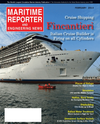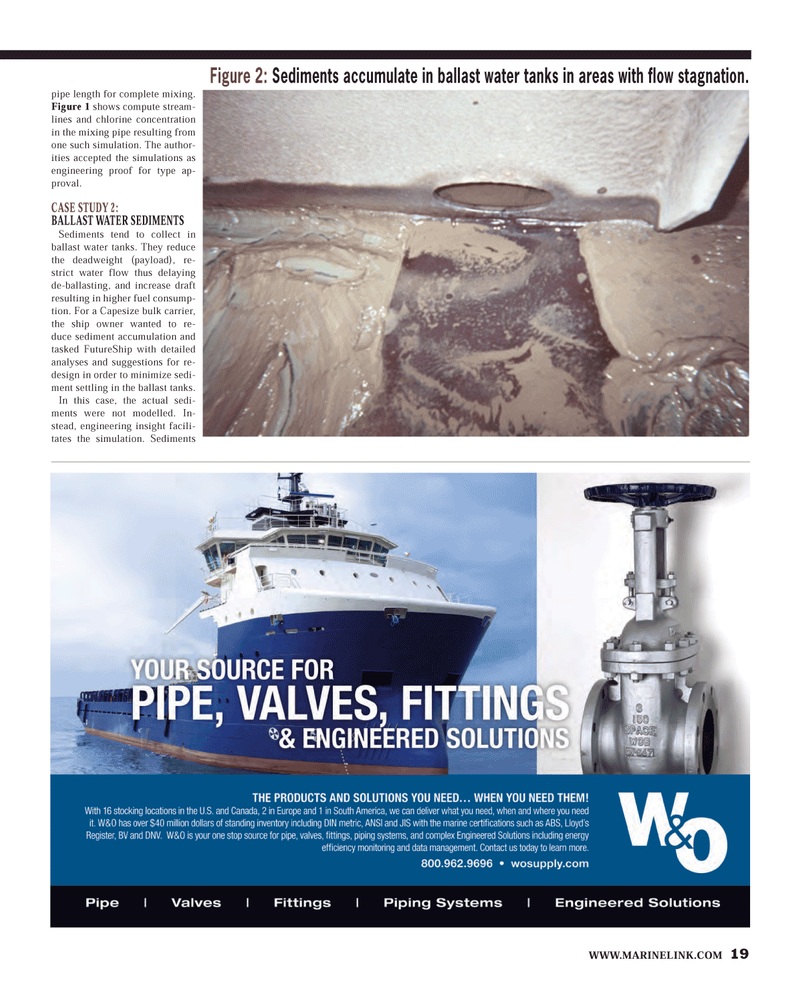
Page 19: of Maritime Reporter Magazine (February 2013)
Cruise & Passenger Vessel
Read this page in Pdf, Flash or Html5 edition of February 2013 Maritime Reporter Magazine
WWW.MARINELINK.COM 19pipe length for complete mixing. Figure 1 shows compute stream-lines and chlorine concentration in the mixing pipe resulting from one such simulation. The author- ities accepted the simulations as engineering proof for type ap-proval. CASE STUDY 2: BALLAST WATER SEDIMENTS Sediments tend to collect in ballast water tanks. They reduce the deadweight (payload), re-strict water flow thus delaying de-ballasting, and increase draft resulting in higher fuel consump-tion. For a Capesize bulk carrier, the ship owner wanted to re-duce sediment accumulation and tasked FutureShip with detailed analyses and suggestions for re-design in order to minimize sedi-ment settling in the ballast tanks. In this case, the actual sedi-ments were not modelled. In-stead, engineering insight facili-tates the simulation. Sediments Figure 2: Sediments accumulate in ballast water tanks in areas with flow stagnation. MR #2 (18-25).indd 19MR #2 (18-25).indd 192/1/2013 9:46:49 AM2/1/2013 9:46:49 AM

 18
18

 20
20
